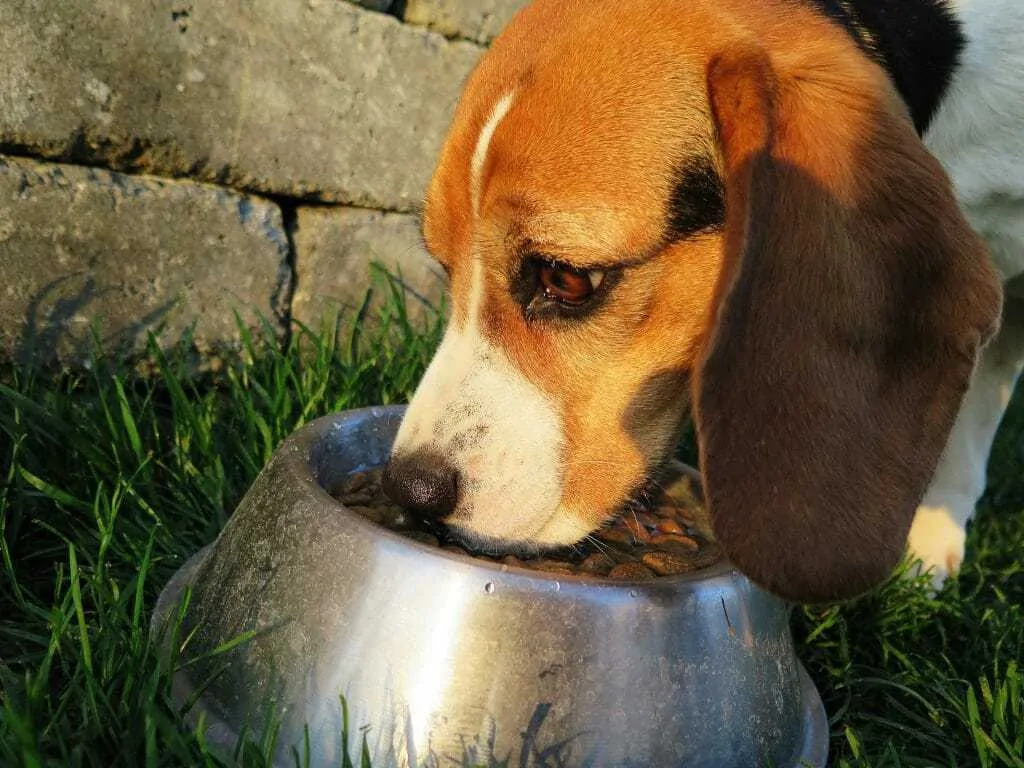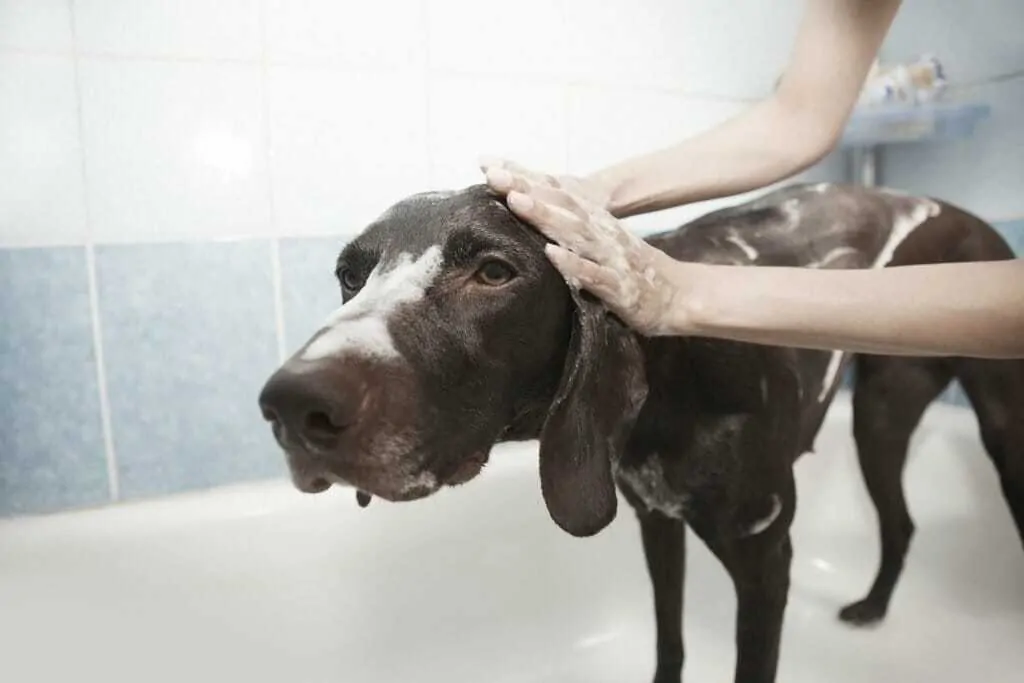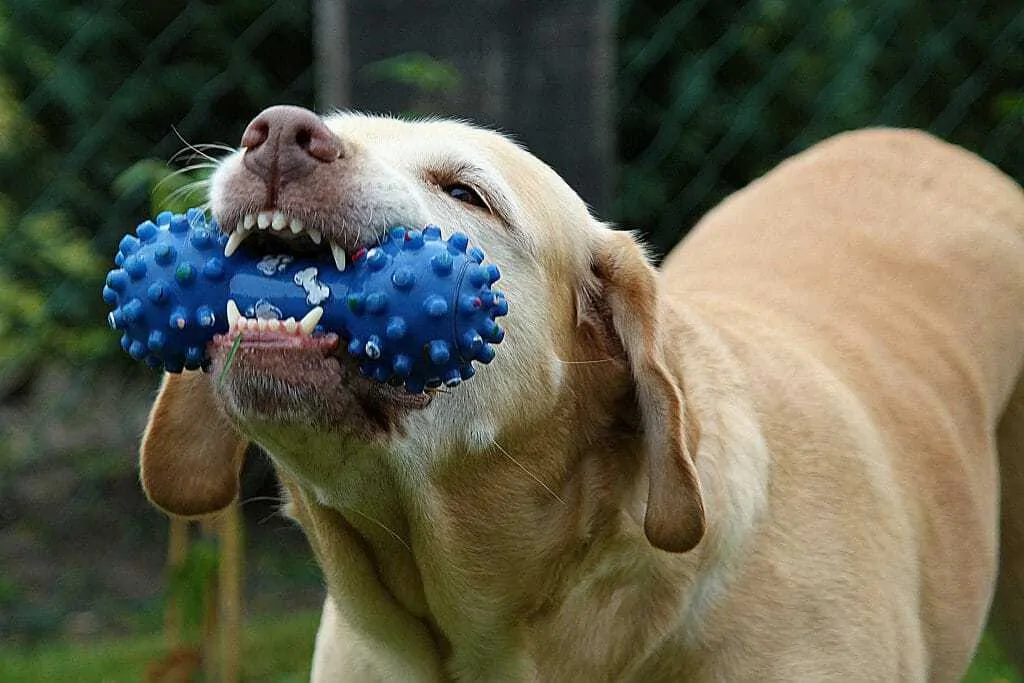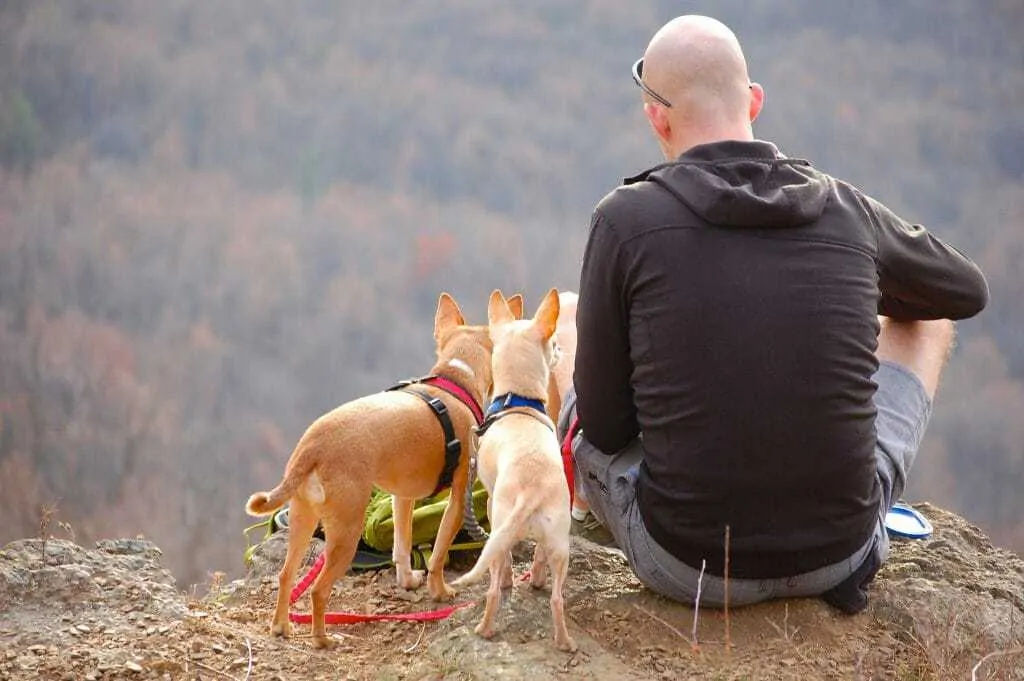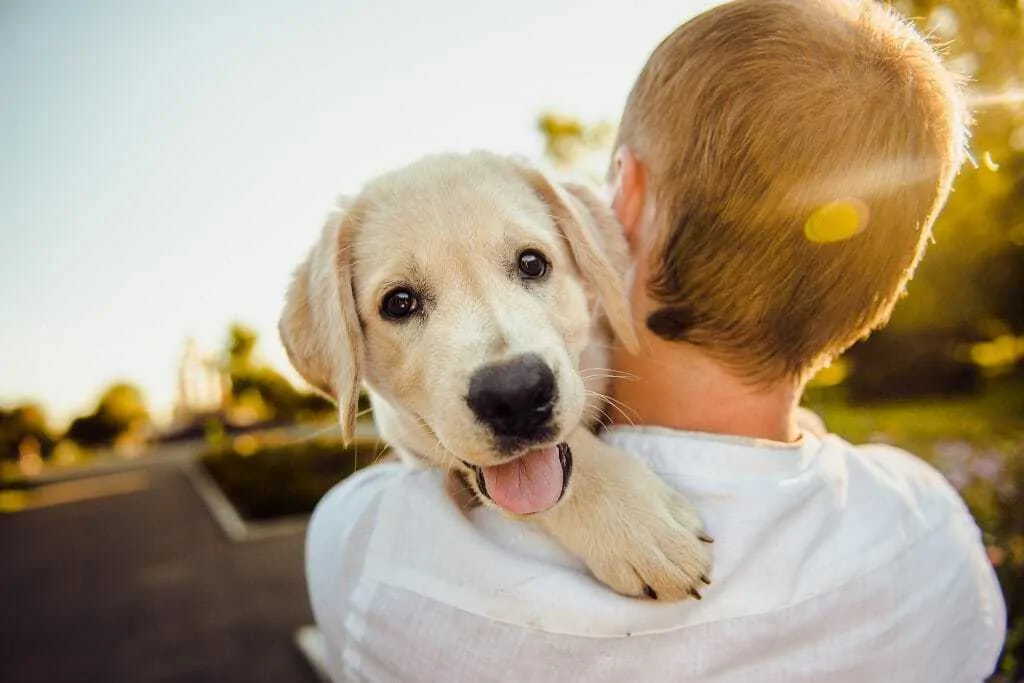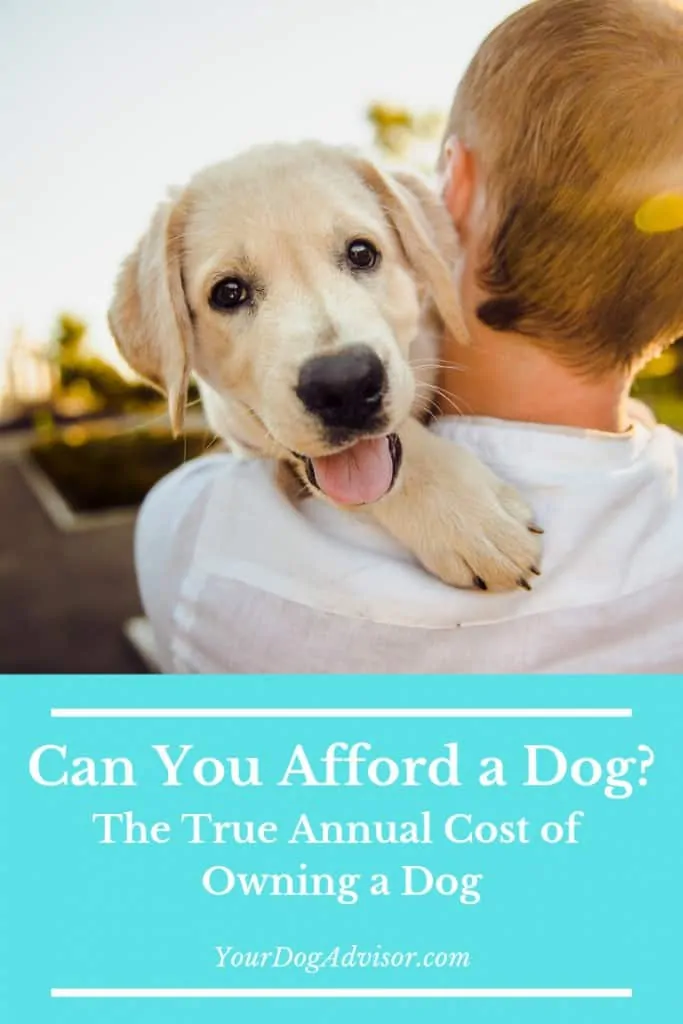As a Financial Planner, it’s second nature for me to evaluate every major life decision from a financial standpoint. I want to ensure that I can afford not only the upfront costs, but the long-term costs too.
When my husband and I added our dog, Kyra, to our family, I also added 2 new lines to our family budget:
- “Kyra’s Monthly Costs” – $100 per month to cover her food, basic toys and routine vet care.
- “Kyra’s Emergency Fund” – Another $100 per month until we build up a $2,000 emergency fund to cover any unexpected or additional expenses.
Adding a dog to your family is a big commitment, and it’s important to consider the financial implications to make sure that you can provide for your new family member for years to come.
Contents
The Average Annual Cost of Owning a Dog
According to the ASPCA, the average annual cost of owning a dog is just over $1,000. The American Kennel Club’s estimate is even higher – they surveyed 1,000 dog owners and found that, on average, they spent more than $2,000 per year on their dogs.
However, these figures don’t tell the whole story. Not only do they assume that you have pet insurance to cover any major medical emergencies, but average costs can be misleading – depending on your dog and your lifestyle, you could easily end up spending much more than the average.
Factors Affecting the Cost of Dog Ownership
The annual costs can vary drastically between dogs of different breeds and sizes.
There are many factors that will influence the actual annual costs for you and your dog:
Size
Large dogs are generally more expensive than smaller ones. Not only do they require more food, but their gear is more expensive and they may require more training and are less easy to travel with.
Breed
Pure-bred dogs are not only more expensive to purchase, but often have higher care and grooming needs, and can be prone to health issues. There may also be additional costs related to training and competitions. Adopted dogs may be less expensive initially, however they can have health issues of their own, particularly if they did not have a good start to life.
Health
Some breeds are prone to specific health conditions, so it pays to do your research ahead of time and be sure you are prepared for potential future vet bills. Rescued dogs may have long-term health consequences that come with cost commitments.
Lifestyle
Finally, your dog’s personality and your family’s lifestyle will play a big role in the overall costs – hyperactive dogs can be more accident-prone; social dogs may need more preventative vaccines. An active lifestyle may require special gear for your dog, and a busy, travel-centric lifestyle may require higher walking and pet-sitting costs.
It pays to think about the long-term costs before adding a dog to your family.
Before you add a dog to your family, it pays to take some time to think about the factors above, choose a dog that fits with your lifestyle and your budget, and create a plan for how you will cover the costs. If your furry friend is already well established in your family, never fear – read on for cost saving tips for all aspects of dog ownership.
The True Costs of Owning a Dog
There are 5 major categories of dog expenses that you’ll need to consider:
- Nutrition
- Veterinary Care
- Grooming & Hygiene
- Development
- Lifestyle
Below you’ll find a description of each category, along with average cost estimates and factors that may affect your actual expenses. Each section also includes tips on where and how to save, as well as where you’re better off to spend the money for better quality.
1. Nutrition ($400+ per year)
Good nutrition is the cornerstone of your dog’s health.
Food is one of the first things that comes to mind when we think about recurring costs of owning a dog. No matter the breed or your lifestyle, every dog owner needs to provide healthy food for their dog.
The ASPCA estimates the annual cost of dog food at $400/year, or $33/month – about the cost of one 15lb bag of mid-level brand dry food. If you have a larger dog, or if you choose to feed your dog higher-quality food, it can easily cost $50 or more per bag. Special diet food can cost even more.
In addition to food, you’ll likely use treats to reward good behaviour, and you may also want to boost your dog’s nutrition with vitamins and other supplements. It’s easy to see why basing your budget on kibble alone could be misleading.
Cost Saving Nutrition Tips
Good food doesn’t have to break the bank.
- Feed your dog the best diet you can afford to support their health – it will save you money on vet bills in the long run.
- Buy your food and treats from a pet store with a loyalty program, buy in bulk and stock up during sales (just be sure to check the expiration date!).
- Consider making homemade dog food – rice, frozen vegetables and meat makes a simple, inexpensive and healthy food. You can freeze the mixture to use as an occasional treat, or as a full-time alternative to store-bought food.
- Make your own inexpensive treats – cut up carrots, cheese and weiners are some of Kyra’s favourites.
2. Veterinary Care ($260+ per year, plus emergencies)
Regular vet care is essential for keeping your dog healthy and your costs down.
The ASPCA recommends budgeting at least $260 per year for routine vet care, but it could easily be much more. On top of routine vaccinations and exams, your lifestyle may require additional regular care – flea and tick medication if you are outdoorsy, or rabies and kennel cough vaccines if you plan to board your dog or enroll in training.
Regular vet care is another cornerstone of your dog’s health. While most dog owners anticipate these annual expenses, many pet owners overlook emergency care. Almost every pet owner will experience at least one $2,000+ emergency in the course of their pet’s life. There is nothing worse than dealing with a sick pet and worrying about how you will afford the care that they desperately need, so planning ahead for emergencies is essential to both your finances and your peace of mind.
Cost Saving Vet Care Tips
- DO NOT skip regular check-ups! Even if your dog has no symptoms and is not due for any vaccines, regular exams with a qualified vet are essential for keeping your dog healthy. Spotting potential problems early will also save you money in the long run.
- Shop around for vet care – ask friends and family, look online and check with local shelters for recommendations to find a qualified vet with reasonable rates. Some shelters and non-profits even offer routine vaccinations at reduced rates.
- Create a separate pet emergency fund – having $1,000-$2,000 set side to cover emergency vet expenses ensures you’ll never worry about affording the care your dog needs. Consider pet insurance as you build your emergency fund, or if you worry about being able to afford an unexpected expense.
3. Grooming and Hygiene ($65+ per year)
A clean dog is a healthy and happy dog.
Grooming and hygiene costs are often overlooked when pet owners are creating their annual pet budget. Keeping your dog clean and comfortable is important to their long-term health and happiness – and saves you money in the long run.
All dogs require some basic grooming – keeping your dog’s teeth, nails and skin in good shape will help you avoid future vet bills. The ASPCA estimates the average cost of grooming to be $65 per year, but this only covers the basics.
Some dogs more high-maintenance – if your dog is pure-bred or long-haired, you may need to invest in additional grooming services and tools. Depending on the breed, your dog’s eyes or ears may need special attention to keep them clean.
Cost-Saving Grooming Tips
Good hygiene can save you money in the long run.
- Keep your dog’s nails and teeth in tip-top shape – dental issues and nail injuries are two of the most common vet emergencies.
- If your dog cooperates, DIY some basic grooming tasks at home – you can find a wealth of resources online to learn how.
- Check local pet stores and shelters for self-serve washing and grooming stations if you need more space or equipment for safe grooming – or if you just want to avoid the mess at home!
- Invest in quality tools that will last, and keep your dog safe.
4. Development ($75+ per year)
The possibilities for your dog’s development are endless – the costs don’t have to be.
Depending on your dog and your goals, training and development costs can vary widely. Even if you don’t plan to do high-level training with your dog, you will be investing in their development in some form throughout their life.
The ASPCA estimates that the average dog owner spends $75 per year on leashes, toys and training, but the costs can easily be much higher. The possibilities for your dog’s development are endless: from basic obedience classes to high-level agility training, to even “doga” (dog-yoga), development costs can add up shockingly quick.
Be clear on your goals and expectations for your dog’s development, and plan ahead for the associated costs in your budget.
Cost Saving Development Tips
Invest in high-quality, durable and safe toys.
- Invest in an introductory obedience class; even if you are not planning to pursue competitions or high-level agility, having a solid obedience foundation is important for keeping your dog safe and happy.
- DIY your dog’s development – there are countless online resources for everything from training to home-made toys.
- Invest in a few safe, durable and educational toys, rather than cheap toys that don’t last and could potentially harm your dog. A high-quality leash and collar or harness are also worthwhile investments.
5. Lifestyle ($200+ per year)
An active lifestyle can come with additional costs.
In addition to the direct costs above, having a dog can affect other areas of your lifestyle and budget.
You’ll need to register your dog with your city’s animal control department and make sure your dog has up-to-date tags; you may also want to invest in signage for your home or yard.
Particularly with a new puppy, be prepared for some damage to your home and belongings (think new shoes and patched drywall). You may need to make some modifications to your home for your dog’s safety and security – adding a fence or kennel to keep them from wandering, installing gates in your home, or even adding ramps or steps as your dog ages.
You’ll also need to replace routine dog items, like their bed, bowls and toys over the years.
If you have a busy work life or travel extensively, you’ll need to factor in the costs of travelling with your dog, boarding fees or dog-sitter and dog-walker services. If you plan to participate in sports or activities with your dog, such as agility or hunting, additional equipment and training will need to be factored in.
The True Annual Cost of Owning a Dog
Adding a dog to your family is a big commitment – make sure you will be able to keep your furry friend healthy and happy for years to come.
As you can see, there is no straight-forward answer to how much it costs per year to own a dog. A lot depends on you, your dog and your lifestyle.
While you should plan for at least $1,000 per year in basic nutrition, vet and grooming expenses, it’s important to think about any other costs specific to your dog, such as increased vet care costs and additional grooming requirements. You should also consider how your lifestyle will impact your overall costs.
Be creative to keep ongoing costs low – buy food in bulk, make homemade treats, and learn grooming and training techniques to use at home. Have a pet emergency fund to cover any unexpected expenses. Connect with other dog owners to trade babysitting or walking services, buy and sell used toys and gear, and learn about the best deals in your area.
With a little planning and some creativity, you can be sure that you will be able to afford to support your furry family member for years to come.



